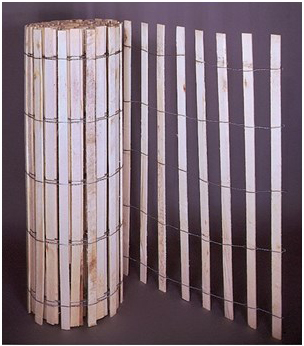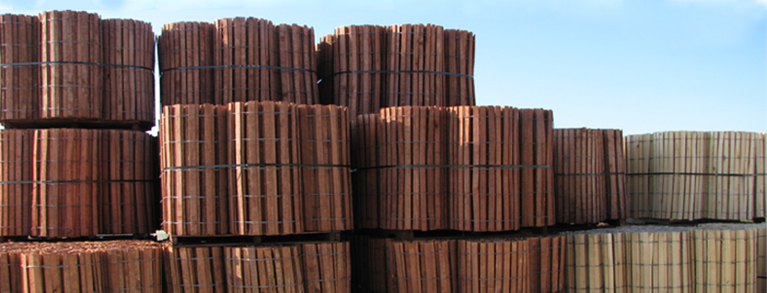
Snow Fence/Tree Protection
The natural wood/snow/sand fence is a safety fence ideal for use in construction sites, residential areas, or highway to control snow and sand. It features natural Aspen wood slats interwoven with four single strands of 14-gauge galvanized, twisted wire.
Product Highlights
- Size: 4’W x 50’L
- Includes 3/8″ x 1-1/2″ natural wood slats
- Four 14-gauge twisted wire strands
- Aspen wood material
- Weight: 75 lbs. per roll
- Ideal for snow and sand control

Traditional wood snow fencing commonly used to prevent snow from drifting where drifting snow can pose a threat to safety. The sturdy construction makes this snow fence a durable and economical alternative to plastic snow fence. Commonly used in farming and other agricultural settings to aid in water collection and retention.
Snow fences don’t stop drifts by blocking the snow that’s blowing right along the ground. They stop drifts by disrupting the aerodynamics of the wind passing overhead, slowing it down so it can no longer carry all the flakes it had picked up.
What this means is that snow doesn’t pile up behind a fence, it drops out of the sky in front of the fence – that is, on the downwind side.
A rule of thumb for placing snow fences
Take the height of the fence and multiply it by 35, and that is the distance you need between the fence and the thing you want to protect, to ensure all the snow will fall out of the air before the wind gets to the target.
For a standard 4-foot snow fence, that equals a distance of 140 feet away. If you’ve ever seen a snow fence sitting forlornly in the middle of a field, now you know why.
Snow fences need a certain “porosity” – holes to keep snow from piling up and knocking it over – and should have a gap at the bottom equal to 10 percent of the height (about 5 inches for that standard 4-foot fence).
Why the gap? So the bottom doesn’t get buried over time. It directs some of the wind under the fence and scours away snow that might build up in front of the fence. This matters because the height of the fence above snow determines how well it disrupts wind passing overhead – so if snow builds up in front, your fence becomes effectively shorter and works less well.
